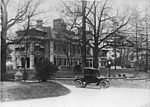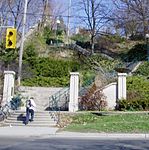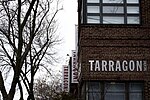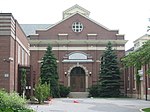1995 Russell Hill subway accident
1995 disasters in Canada1995 in TorontoAccidents and incidents involving Toronto Transit CommissionAugust 1995 events in CanadaRailway accidents and incidents in Ontario ... and 3 more
Railway accidents in 1995Railway accidents involving a signal passed at dangerToronto rapid transit

The 1995 Russell Hill subway accident was a deadly train crash that occurred in Toronto, Ontario, Canada, on Line 1 Yonge–University of the Toronto subway on August 11, 1995. Three people were killed and 30 were taken to hospital with injuries when one train rear-ended another train. The subway line was shut down for five days following the incident. Investigations found that human error and a design flaw in the mechanical safety devices caused this accident. It remains the deadliest accident in a rapid transit system in Canadian history.
Excerpt from the Wikipedia article 1995 Russell Hill subway accident (License: CC BY-SA 3.0, Authors, Images).1995 Russell Hill subway accident
Connable Drive, Toronto
Geographical coordinates (GPS) Address Nearby Places Show on map
Geographical coordinates (GPS)
| Latitude | Longitude |
|---|---|
| N 43.682351 ° | E -79.41187 ° |
Address
Connable Drive 2
M5P 2X7 Toronto
Ontario, Canada
Open on Google Maps









